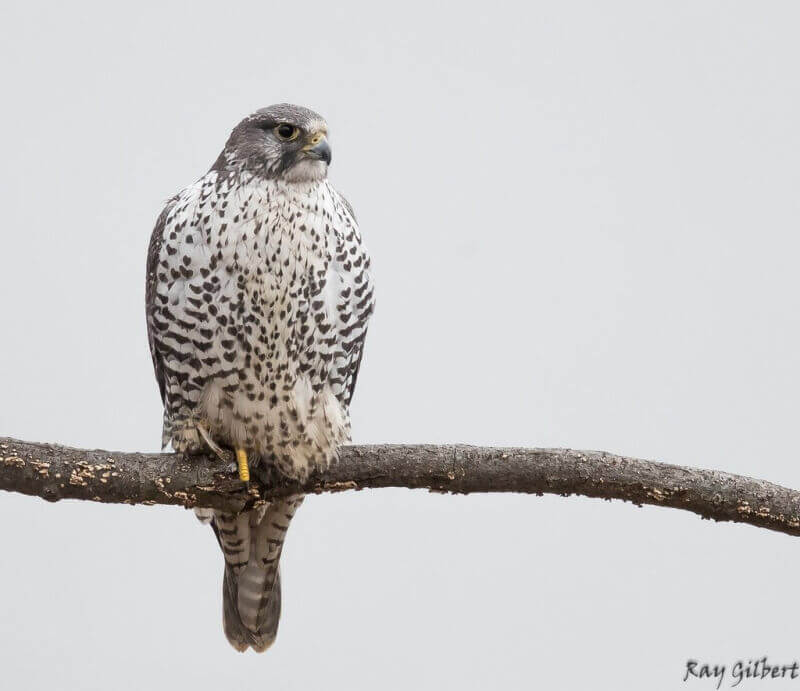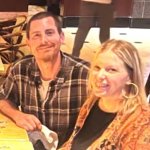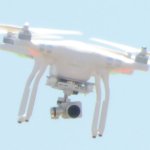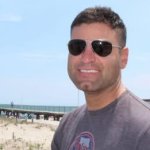By JoAnne Castagna, Ed.D.
This past spring, Dr. Lenore Tedesco was looking out her window at The Wetlands Institute that sits in the middle of vast marshland in Cape May County, New Jersey.
Outside, heavy rain and flooding tides associated with the Mother’s Day Nor’easter, were thoroughly soaking the marsh, a low-lying wetland with grassy vegetation that is usually present in areas of transition between land and water.
To her dismay, she saw birds and their chicks being flooded out of their marsh homes. Some of the birds escaped to roads and some were struck by cars.
What pleased Tedesco, who is the executive director of The Wetlands Institute, was that some birds found refuge in the high grounds of several marsh islands that were recently restored with dredged sand and mud.
These dredging and beneficial use projects are the result of a collaboration between the U.S. Army Corps of Engineers, North Atlantic Division, and other agencies and organizations. The projects involve dredging critical navigation channels and using the sediment to restore vanishing bird habitats while also enhancing resilience for coastal communities.
Beneficially using sand and mud is of increasing importance to USACE. “One of the Army Corps’ primary missions is to dredge federal navigational waterways to ensure easy passage by vessels,” said Rena Weichenberg, environmental team lead of the planning and policy division, North Atlantic Division. “Sand and mud sediment removed from the bottom of the waterways was often historically placed in permitted ocean disposal sites or confined disposal facilities. There has been a welcomed evolution toward USACE retaining sediment in the system, and beneficially using it to both protect people and to protect, restore, and create aquatic and related habitats.”
Following are two USACE projects taking advantage of dredged material within the North Atlantic Division.
Seven Mile Island Innovation Lab, Cape May, New Jersey
USACE Philadelphia District
In 2019, the USACE Philadelphia District, U.S. Army Engineer Research and Development Center, The Wetlands Institute, and the State of New Jersey partnered to form the Seven Mile Island Innovation Lab in Cape May County. The lab is based on a concept pioneered by the Dutch who use a “living lab for mud” to test and demonstrate environmental and social benefits.
The goals of the initiative are multi-faceted – advance and improve dredging and marsh restoration techniques in coastal New Jersey through innovative research, collaboration, knowledge sharing and practical application.
Tedesco said, “The lab was created to act as a think tank to advance dredging and marsh restoration techniques. We put together a host of projects where we can test how we can beneficially use dredged material to create resiliency for both our ecosystems and our communities.”
Seven Mile Island, New Jersey, has proven an ideal site for the lab due to the presence of existing and historic dredged material placement sites, federal and state channels including the New Jersey Intracoastal Waterway, extensive tidal marshes, and a mixture of sandy and muddy sediments.
The Wetlands Institute facility located adjacent to the marsh has served as a meeting space for partners and provides an ideal place to observe the successes of projects.
The lab is surrounded by 15,000 acres of marshland, providing a habitat for birds, fish, shellfish, and other wildlife. Marshes help to maintain water quality by removing nitrogen and phosphates and act as a buffer from flooding for coastal communities during destructive and powerful storms.
According to Tedesco, one study done by Lloyd’s of London showed marshes play a critical role in reducing damage to infrastructure from coastal storms. These industry models showed during Hurricane Sandy marshes prevented $625 million in direct flood damages across 12 states. In New Jersey, coastal marshes reduced property damages by more than 20 percent.
Unfortunately, marshes are at risk of decline due in large part to sea level rise, putting coastal communities at risk. Rising waters are also harming ecosystems. Tedesco said, “Marsh grasses grow well over a very narrow range of water depth. During times of naturally slow rising sea level, they can do quite well and keep up with rising water levels by building dense root structures and trapping storm-transported mud and sand.
“If sea level rises too fast, marshes can begin to drown and shift to open-water areas or mudflats. Flooding during the nesting season can destroy bird nests or chicks of American oystercatchers and laughing gulls and many other bird species that depend on the marsh to nest and raise young.”
As part of the lab’s work, dredged sand and mud from the nearby 117-mile New Jersey Intracoastal Waterway have been used to restore drowning marshes and create new habitats that are vanishing, using a variety of techniques. This work provides habitat for long-legged wading birds, beach nesting birds, migratory shorebirds and other species that use the marsh, and can also increase marsh elevations to protect the marsh itself.
“Sediment is the currency of these ecosystems, and we know these marshes are sediment-starved, so we must work to find innovative ways to utilize the clean sediments that clog navigation channels to enhance marshes and offset sea-level rise,” said Tedesco.
Thus far, USACE and its partners have completed multiple dredging and marsh restoration projects throughout the back bays of Seven Mile Island.
The goal is to use dredged sand and muddy sediment to fill in low-lying and drowning areas of the islands and increase marsh elevations. This elevated marsh can provide nesting habitat for long-legged wading birds, such as egrets, herons, and ibis, as well as colonial and marsh nesting birds, such as the salt marsh sparrow, which builds a teacup-sized nest on or close to the ground.
Two of the islands enhanced with dredged materials support nesting for 25 percent of the long-legged wading bird colonies in New Jersey including the glossy ibis, little blue heron, snowy egret, tricolored heron, great egret, and black-crowned night heron, according to The Wetlands Institute. Almost all of these birds are considered priority species of greatest conservation or are state endangered species or species of concern in New Jersey.
In the last few years, birds have flocked to the project sites including beach nesting birds and migratory shorebirds including black skimmers, common and least terns, American oystercatchers, sandpipers, plovers, and whimbrel. In addition, diamondback terrapins and horseshoe crabs are also using these habitats, and the team’s restoration work is also enhancing some fish habitats.
Innovation lab team members are monitoring these marshes and placement sites and seeking innovative ways to improve dredging and placement techniques. These projects are always evolving, and the team is using lessons learned to improve them through adaptive management.
The team members find the work rewarding and enjoy working together. “It’s been wonderful. There is a true sense of respect and admiration for each other and a sense of the importance of the work we are all doing,” said Tedesco.
Philadelphia District’s use of dredged material has proven successful restoring bird habitats endangered by mother nature. USACE Norfolk District, on the other hand, is finding ways to beneficially use dredged sand and mud to create solutions for bird habitats endangered by progress.
Hampton Roads Beneficial Use of Dredged Material Project, Norfolk, Virginia
USACE Norfolk District
During the summer in Norfolk Harbor, Virginia, people used to see an island filled with birds— thousands of them. For this reason, the locals called it “Bird Island.”
Its official name is South Island, and for the last 30 years until 2020, it was home to the largest and most productive bird colony in Virginia. Approximately 25,000 seabirds, wading birds and other migratory bird species used the island for shelter, forging and nesting — away from disturbances and predators.
Bird species on this island included the royal tern, sandwich tern, common tern, gull-billed tern, black skimmer, laughing gull, herring gull, and the great black-backed gull.
In Virginia, many of these species are identified as “species of greatest conservation need.” The gull-billed tern is designated as a state threatened species. With the exception of herring gulls and great black-backed gulls, many of these birds are in peril or need to be protected.
On the federal level, the gull-billed tern and the black skimmer are U.S. Fish and Wildlife Service “species of conservation” and are listed as decreasing on The International Union for Conservation of Nature’s “Red List of Threatened Species.”
South Island is part of the Hampton Roads Bridge-Tunnel complex, a series of bridges, anchoring islands, and tunnels, which is presently undergoing a massive expansion that includes widening lanes and adding tunnels. This has required substantial construction activity on South Island, making the island unsafe and unsuitable for the birds to use as a nesting location.
Understanding the importance of providing a safe alternative habitat, several agencies teamed together to investigate the feasibility of using dredged sand and mud. These agencies include USACE Norfolk District, the Virginia Department of Conservation and Recreation, Virginia Tech Shorebird Team, Virginia Department of Transportation, and Virginia Department of Wildlife Resources.
In Virginia, protecting bird habitats like “Bird Island” is especially important. According to Michelle Hamor, Norfolk District’s chief of the planning and policy branch, in Virginia, seabirds often nest in large groups. Because of this behavior, and because they like open, sandy areas, they typically breed in very few locations, so if a breeding area is lost, it can have profound consequences.
This is the case with South Island. Several of the species on this island used it almost exclusively as a nesting place. According to Becky Gwynn, deputy director for the Virginia Department of Wildlife Resource, royal terns and sandwich terns nested on South Island and nowhere else in Virginia, and about 50 percent of black skimmers and common terns nested on the island.
As a temporary solution, the team worked together to create a habitat for these birds on Fort Wool, a former Army post on an eight-acre island connected to South Island by a stony jetty.
They converted the old post’s parade ground into a 1.5-acre nesting habitat. To increase the available nesting area, three barges were anchored adjacent to Fort Wool, providing an additional acre, for a total of 2.5 acres of nesting habitat overall.
They cleared vegetation on the island to make it attractive to the seabirds and then placed 1,700 cubic yards of barged-in sand over the entire parade ground to provide an appropriate habitat for these species. Dredged sand and mud will be used in future work.
These birds like a habitat that mimics a beach island environment, so the team spread a coarse sand on the parade ground and a sand/pea gravel mixture onto the barges and created gentle slopes that mimic a barrier island. They also placed short sidewalls around the tops of the barges to prevent young chicks from running off the edges.
To lure the birds to the new habitat, bird call recordings were played and decoys of several tern species and black skimmers were placed on the island.
Their work was successful. “In one site visit the first year, we recorded 3,500 royal tern chicks. We also documented 200 sandwich terns, 1,000 common terns, 150 black skimmers, and thousands of laughing gulls. Only one pair of gull-billed terns was documented on the barges during the first nesting season, but anglers and other observers spotted more in the air. And the gull-billed terns produced two fledglings – chicks that survived to take flight,” said Gwynn. “In 2021, we documented 6,283 royal tern nests, 663 common tern nests, 139 black skimmer nests, and 15 gull-billed tern nests – a real success!”
Not only is this habitat beneficial for birds, but also for coastal communities. Providing these birds a home keeps them away from cars and planes, reducing potential car collisions and bird strikes with aircraft from a nearby airfield.
The team has plans for this bird colony. Hamor said, “We are conducting a feasibility study to investigate opportunities to create 10-12 acres of permanent habitat using dredged material from federal navigation channels for existing and future seabird colonies, specifically to increase the value and quantity of habitat for shorebirds, wading birds and migratory species.” In addition, this new habitat may encourage the growth of clams, oysters, red drum, seatrout, summer flounder, and striped bass, which can lead to increasing opportunities for commercial and sport fishing.
The Hampton Roads Beneficial Use of Dredged Material Project and the Seven Mile Island Innovation Lab are both successfully restoring vanishing bird habitats using dredged sand and mud while at the same time helping coastal communities.
Tedesco sums up the importance of these projects. A few years ago, she was once again looking out her window at The Wetlands Institute and saw something that absolutely delighted her. She saw a rare gyrfalcon wander into the area and perch on the high grounds of one of the newly restored marshes. If the marsh had not been restored, that bird would not have had a habitat to forage. Not only was Tedesco excited, but also the hundreds of people who flocked there with telescopes and binoculars for an opportunity to get a glimpse of this bird.
Tedesco said, “This represents an important example of the multiple benefits of these projects that provide habitats for birds and social and recreational benefits for people.”
Dr. JoAnne Castagna is a public affairs specialist and writer for the U.S. Army Corps of Engineers, North Atlantic Division. She can be reached at joanne.castagna@usace.army.mil.
Cape May County – Did i miss something? I am watching the defense secretary hearings and I keep hearing Republicans and nominee Hesgeth commenting on how tough Trump will make our military. So, are they saying it isn…








